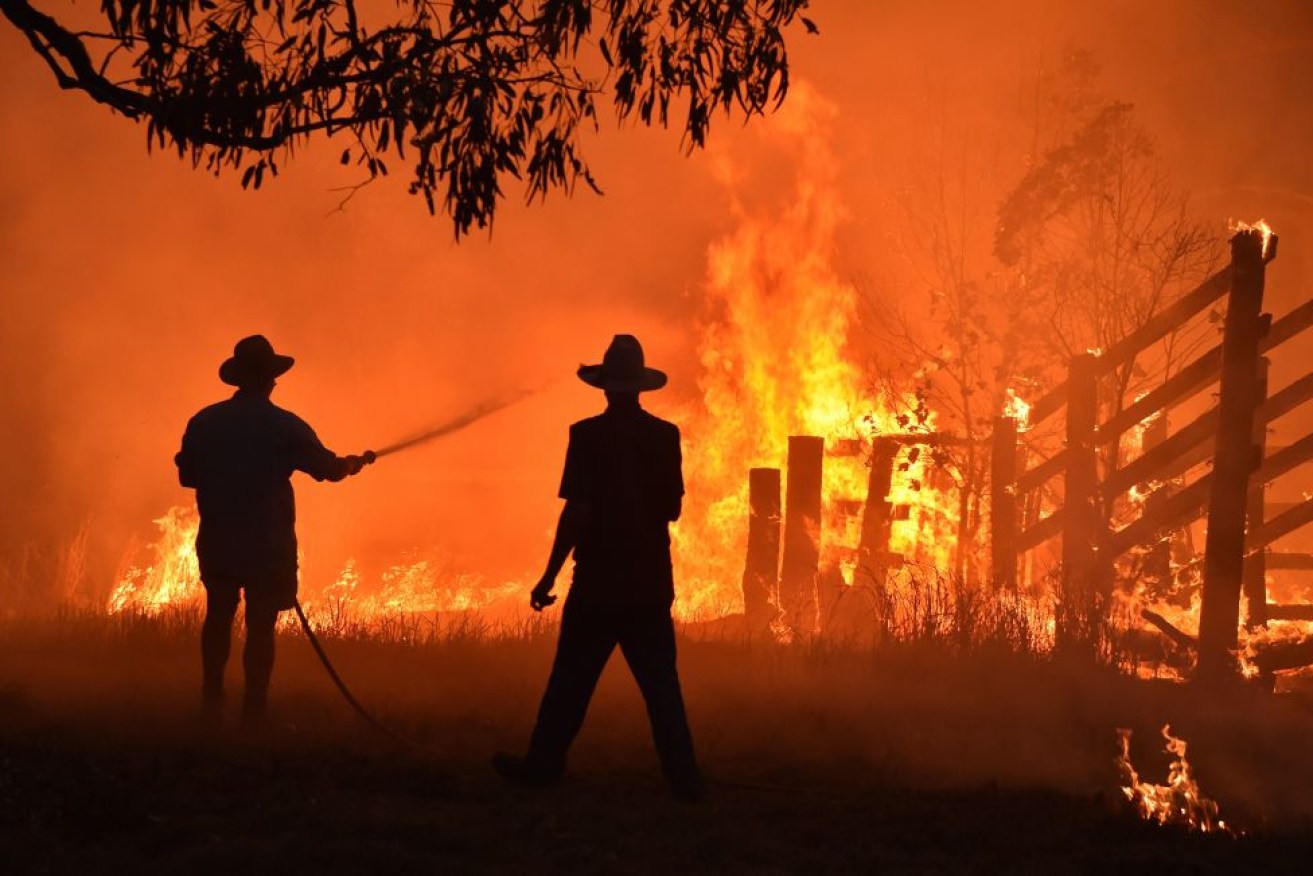Smoke a major health risk as bushfires burn around the nation


Scourged by the fury of the flames, vast tracts have burnt - and lives and homes with them. Photo: Getty
As bushfires continue to rage around Australia, the lingering threat of toxic smoke is putting the health of millions of people at risk.
As of Thursday, there were still 59 fires burning in New South Wales, 60 in Victoria, 65 across South Australia, nine in Queensland and two in Tasmania.
NSW has been the worst state affected, with flames wiping out 612 homes and killing six people.
Air pollution remains a huge problem across the state.
The air quality index (AQI) hit 707 in Sydney’s CBD, while Rouse Hill in the city’s north-west climbed to 437. Anything above 200 is considered hazardous, while 65 and below is rated as ‘good’.
https://twitter.com/LaPetitTrader/status/1197281356545318912
On Friday, most locations around NSW had an AQI over 200.
The lingering hazy smoke means that even when the flames have been put out and the fire crews have gone home, dangerous particles can hang around in the air much longer than we think.
Why is bushfire smoke dangerous?
Bushfire smoke, though not as toxic as the smoke caused by industries and factories, can still cause serious harm.
It is made up of a mixture of small ash particles, water vapour and gases such as carbon monoxide, carbon dioxide and nitrogen oxide that are produced when bushland burns.
If properties have caught fire too, the smoke could also include tar, plastics and even metals.
Out of all these poisonous substances, the biggest threat to us is those tiny particles that make the air hazy and hard to see.
These microscopic particles can get deep into our lungs and make it difficult to breathe when a fire is burning.
In serious cases, the lungs can get inflamed, increasing the risk of developing chronic obstructive pulmonary disease (COPD).
Common symptoms include coughing, shortness of breath, burning eyes and an itchy nose and throat.
The effects are a lot worse for people who already suffer from a heart or lung disease, as well as pregnant women, young children and the elderly.
But there’s another risk many people aren’t aware of: These little sooty particles can stay the air long after a fire has been put out.
That’s because they turn into incombustible materials that can’t be burned any further, meaning they can easily stick around for days after a fire has been extinguished.
Even if you closed your doors and windows, and turned off any cooling and heating systems while a fire was burning, ash can still come into your home through ceiling holes, cracks in the roof space, unsealed vent points and gaps between doors and windows.
What should you do to get rid of ash or soot?
Damp mops and cloths will be your best friends when cleaning up ash or soot, advises Better Health Victoria.
Before you start cleaning, pull on a dust mask, gloves, a long-sleeved shirt and a long pair of pants. It is very important to avoid getting ash on your skin.
Sweep or use a vacuum with an HEPA-filter on indoor and outdoor hard surfaces before mopping them. Use a damp cloth on lightly dusted areas.
Do whatever you can to stop the ash from spreading by avoiding leaf blowers or anything else that will push it back up into the air.
Keep children away, and wash off any ash from your skin as soon as you can.
What else should you do to protect yourself from bushfire smoke?
If your community has been badly burnt by bushfires, consider leaving until the air quality has improved.
If you decide to stay, avoid exercising as this will make you breathe faster and deeper and greatly increase your exposure to smoke.
Make sure your air conditioner is set to recycle so you don’t bring in any air from outside, and if you can add a filter, do it.
If the air is unbearable and you need a break, go to the movies or a shopping centre until the worst is over.








